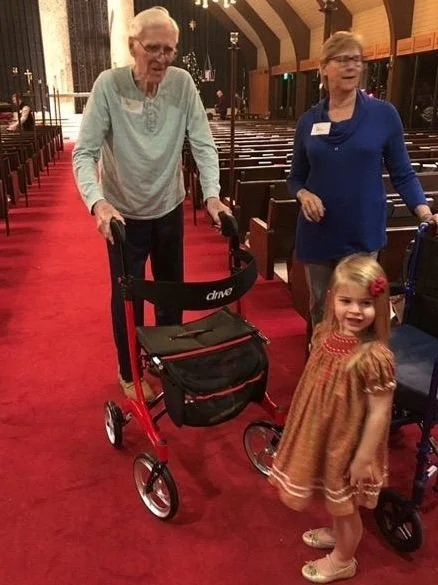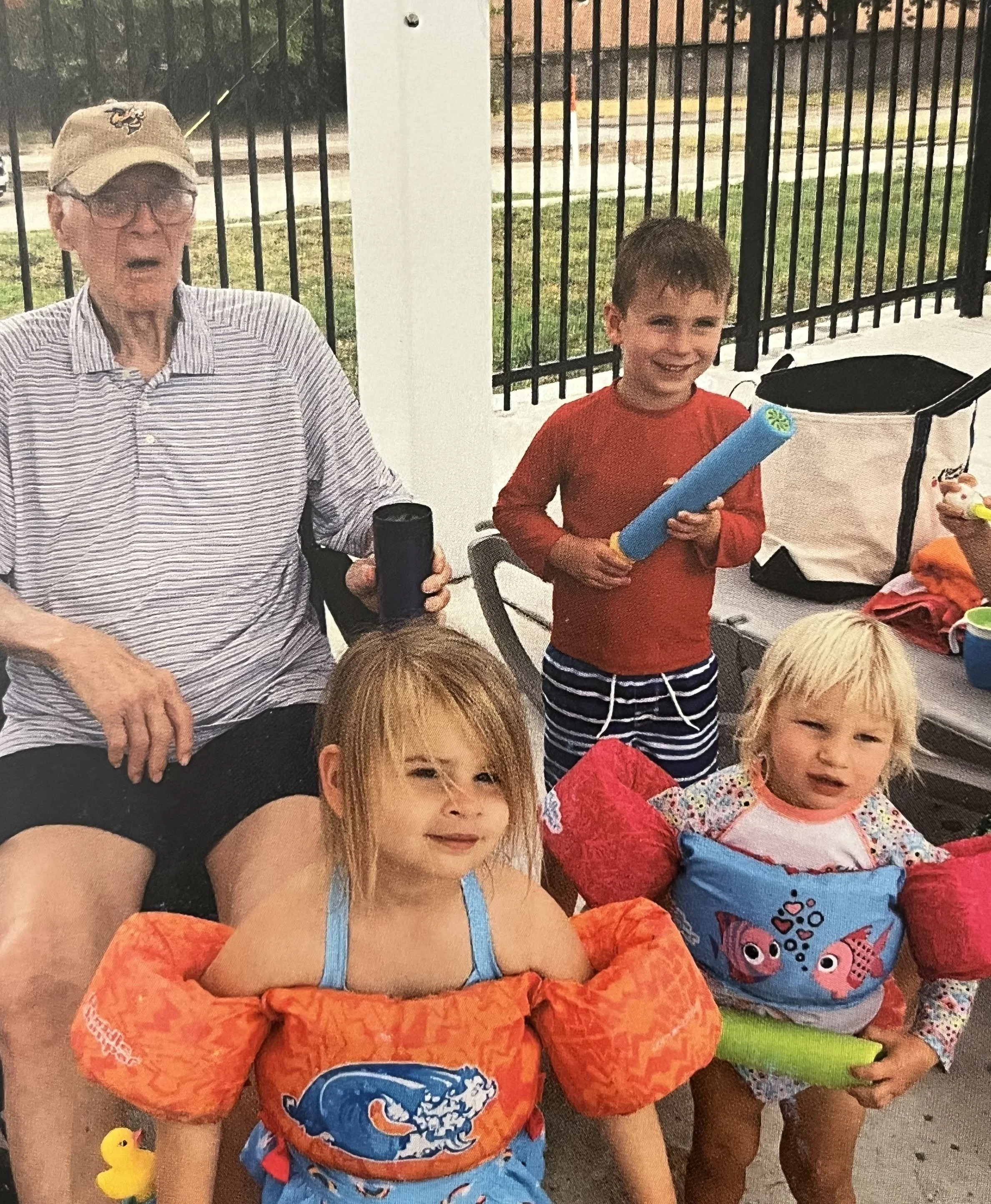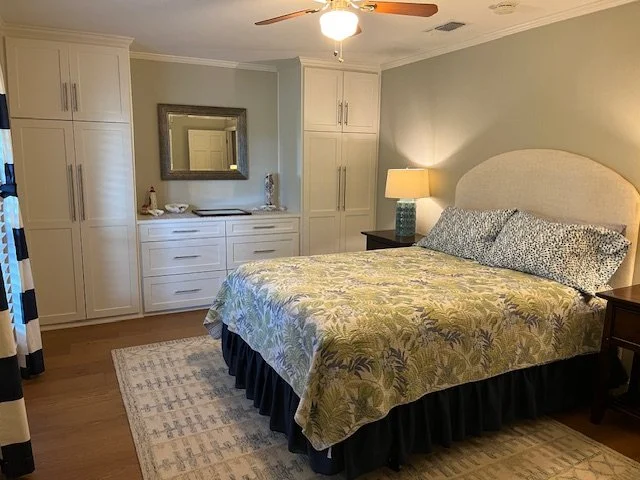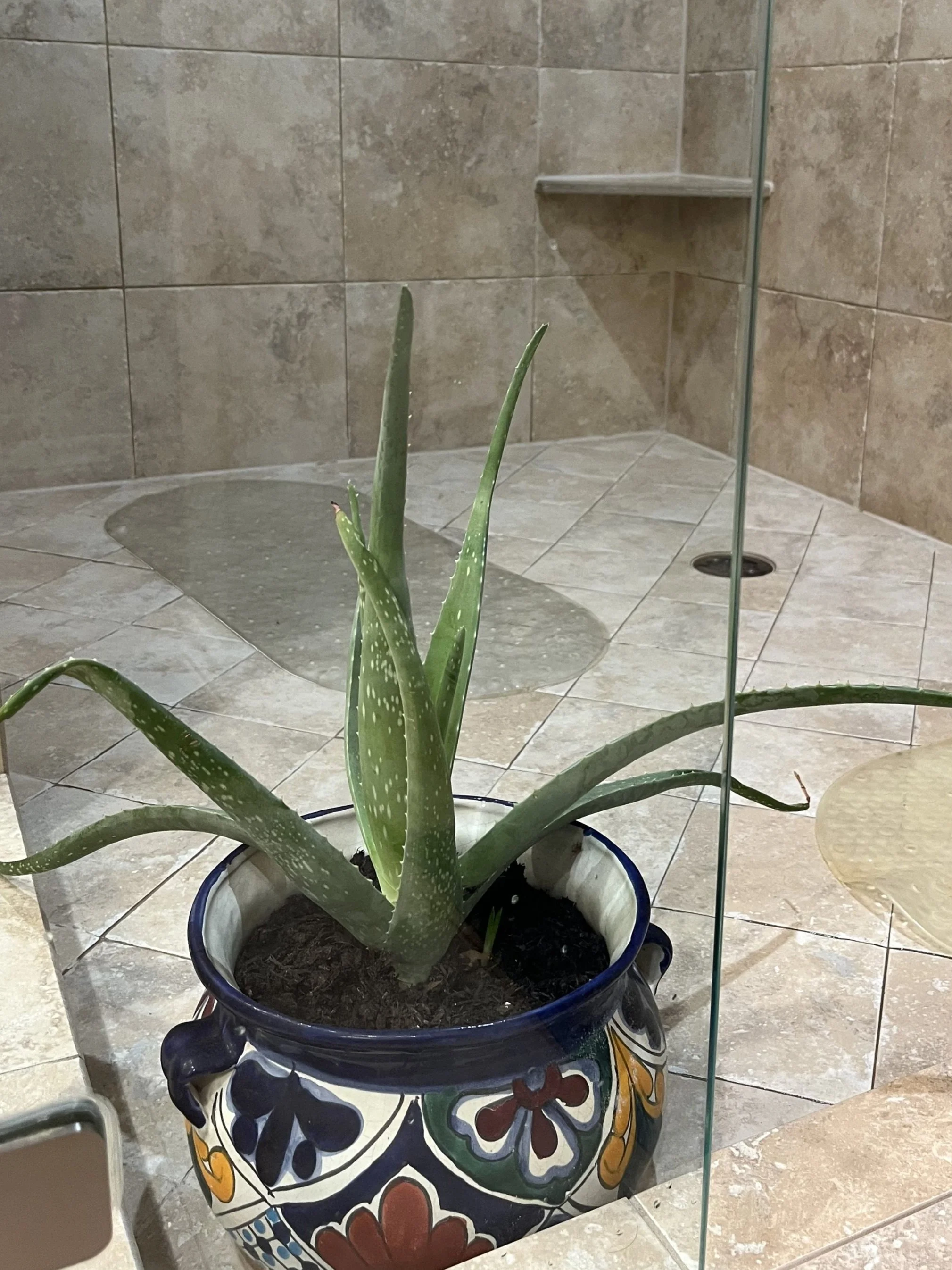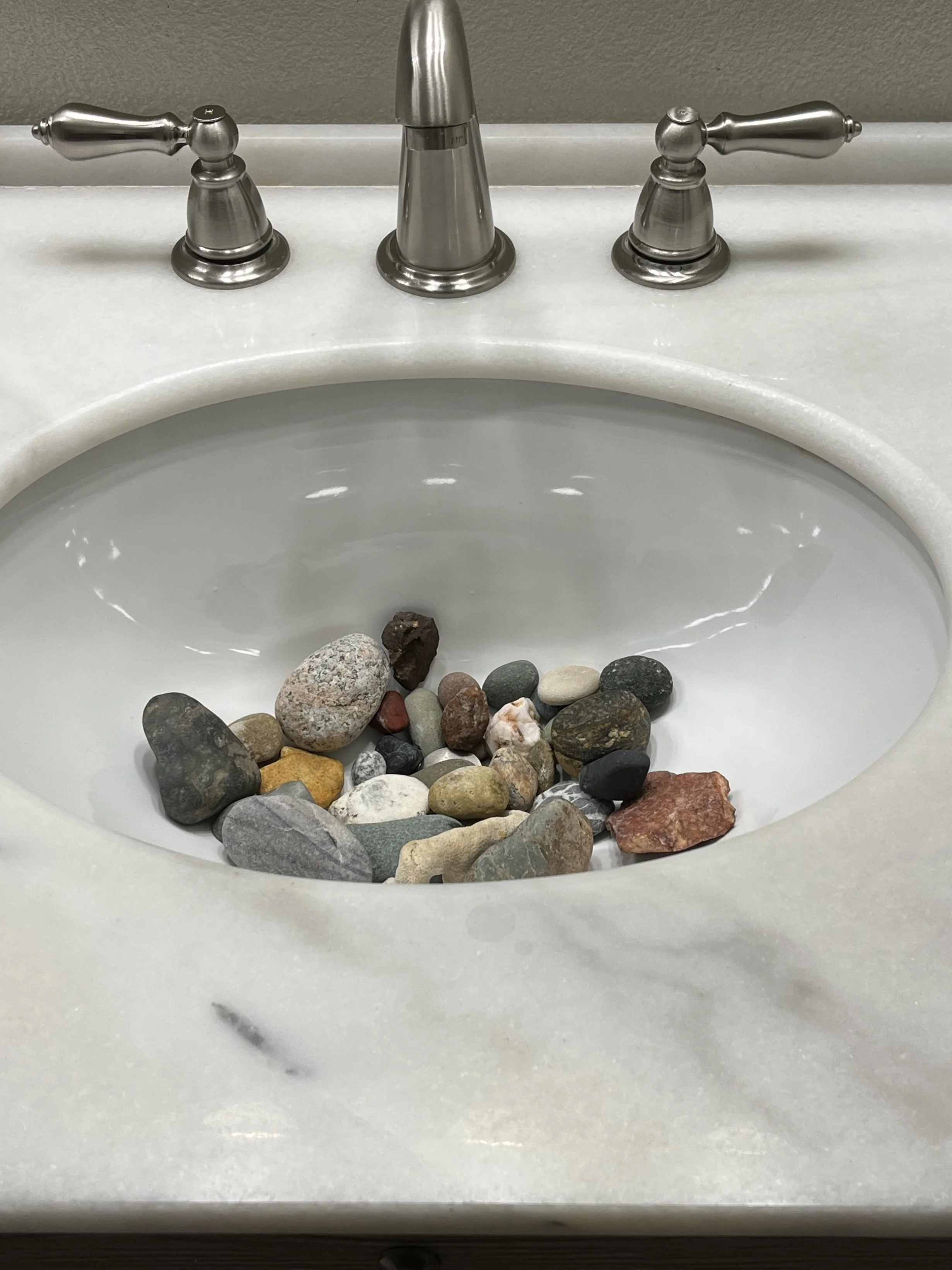Multigenerational Living
August 2025
Multigenerational living , it’s about shared resources, mutual care, and deeper family bonds.
Are you like 1/4 of all adults ages 24-35 living in a multigenerational living situation?
Great grandson with his Pop Pop
4 generations
The Pew Research Center stated there was an 18% increase in multigenerational households between 2010 and 2020. While COVID-19 affected this trend, the number of such households continues to rise. 68% of 18-year-olds in the US still live with their parents, according to a recent study because of caregiving, children and elderly parents.
According to the Harvard Business Review, more working adults now care for elderly relatives than children. This trend is changing the workplace, as employees juggle growing eldercare responsibilities over childcare.
Compounding the challenge, the nation faces a shortage of qualified caregivers, exacerbated by restrictive visa policies limiting the entry of new workers. As a result, families must shoulder the bulk of caregiving duties.
Change is urgent: Over 46 million Americans are 65 or older, and this figure will approach 90 million by 2050. By 2030, one in five Americans will be at least 65.
The dramatic demographic shift underscores the importance of preparing adaptable living solutions that support the health and well-being of older adults.
Designing for multigenerational living isn’t one-size-fits-all. Creating a home for multiple generations requires careful design, such as including private spaces, adaptable rooms, or separate living areas like in-law suites or accessory dwelling units. Consider whether you can modify your current home to meet these needs or if expanding the house is a better solution.
Amid these difficulties emerges a promising trend: multigenerational households, highlighted by Forbes in 2025 as a key development in senior living. When family members of different ages reside together, all can benefit.
Older adults bring wisdom, compassion, and a lifetime of experience, enriching daily life through shared activities, meaningful conversation, and gentle guidance. Younger family members offer energy, curiosity, and fresh perspectives—along with a healthy dose of lighthearted distraction. Together, they build shared memories, celebrate traditions, and learn the values of empathy and cooperation.
In conversations with families living in multigenerational households, a common theme emerges: the importance of maintaining strong social networks for older family members. The pandemic underscored the detrimental effects of isolation, highlighting how essential it is to ensure elders have opportunities for meaningful social interaction, which supports both their health and overall sense of well-being.
Communication was another concern. Some families hold meetings to address both challenges and successes. Managing expectations and staying flexible are essential in this dynamic living arrangement.
Caring for older adults is a valued tradition in many cultures. I aim to illustrate how Universal Design (UD) can play a key role in the decision-making process of Multigenerational Living.
Reflecting on my own experience, I’ve seen the rewards of multigenerational households—sometimes with three or even four generations under one roof. The support of elders, both emotional and financial, creates a strong foundation for the entire family. We participated in community programs together, attended church as a family and never had to navigate important moments—like medical appointments—from a distance.
Four generations at church
The younger generation, exposed to the rhythms and realities of aging, developed a respectful awareness of life’s many stages. Their playfulness brought joy into the home—baking, golfing, painting, gardening, swimming, or simply sharing a meal or a movie. These moments fostered deep bonds and lasting compassion. Children learned how to listen and offer help; elders found companionship and purpose. Whether sharing a glass of wine, flying paper airplanes, celebrating holidays, or simply painting side by side, these experiences wove us together as family.
Summer in Texas, here are the water pistols?
Multigenerational living is an integration of physical, emotional and social needs of everyone living in the spaces.
We’ll begin by examining whether the shared exterior and interior physical spaces are supportive and working for everyone.
When assessing a home space, start with the person who has the most involved mobility issues. By planning for their needs first, you will find that most UD solutions will work for everyone’s mobility needs.
Checklist of UD and Physical Needs
1. Start with the Blog UD checklist for entrances, go through the next 6 blogs; pathways, inside and outside staging, shelter in place, ramps, stairs, and exterior doors, to determine if you can accommodate someone with aging or mobility issues.
2. Next look at Common areas where the family gathers, including entries, living rooms, bathrooms and kitchens which need to follow the 6’ turning radius rule.
3. Where is the “quiet space” and “noisy space” to accommodate young and old?
4. Bring the outside into the house as much as possible through window placement, orientation of beds and chairs to take advantage of outside views.
5. Do the windows allow for outside “window viewing” or “surveillance zones”?
6. Shelter in place or covered porches.
7. Include key people in the home for input on physical solutions.
8. Include products with good UD features: hardware and utensils, so all can participate in home activities.
The next step is recognizing the social/emotional needs of family members.
Checklist of UD and Social/ Emotional needs:
9. Communicate expectations and have a communication system to check in and make sure this living arrangement is working. Bring all key persons together to communicate and solve problems.
10. As a person’s mobility becomes more limited, bring more of the outdoors inside to enhance health and wellbeing.
11. Ensure there is enough of a social network for aging family members so they don’t feel isolated.
After assessing if your space supports multigenerational living, you might need renovations. Consult architects, designers, physical or occupational therapists for guidance.
We hired an architect who made a helpful suggestion that improved our home's flexibility and comfort. By swapping the office and guest bedroom, the quieter room became the bedroom with private bathroom access, requiring only the addition of closets to complete the guest suite.
New guest suite with closet
In other instances, we renovated to include a universally designed bathroom, installed additional grab bars, expanded entryways and living areas to allow for a larger turning radius, and replaced bathtubs with showers.
UD Shower conversion from a tub. Now Zero entry and accommodates a shower chair.
What’s so special about windows?
Windows connect older people to their outside world. It is really important to look at windows as a critical UD feature. Retired UK Professor Graham Rowles an aging specialist, calls it the “surveillance zone” or what one can observe outside their window.
“Surveillance Zone” outside your window. The tree in front of window outside provides some cover from the street making it easy to watch what happens on the sidewalk.
Professor Rowles’ research on aging found that there are positives of “window viewing”. Well-designed windows bring daylight into dark spaces, which boosts mood, sleep, and relaxation. Studies show that light from two directions is most effective.
What older people see from their windows can have a real impact—especially views of nature, which enhance mental well-being. Enjoying greenery, wildlife, and seasonal changes can be uplifting for them.
Sunrise in North Carolina
Sunrise in Texas
For some, urban life is more stimulating than nature, with sights like kids playing, dog walkers, families with strollers, workers repairing roofs, or street parties providing energy and visual interest. They can inconspicuously participate in the ebb and flow of urban life, which may help relieve their boredom and possibly distract them from stressful thoughts.
Lots of double strollers in our neighborhood.
Our grandmother used to perch and sit by the window, watching the front of the house, while our other grandmother preferred the stoop to observe the neighborhood. Today, the stoop has been replaced by a covered porch or shelter in place
Another important concept for Multigenerational Living is the idea of bringing the outdoors inside a home. When your mobility becomes limited, seeing the outdoors gives the person literally a breath of fresh air. Bringing greenery inside a home whether real or plastic can offer visual interest.
The calming effects of water are well-documented, with features such as fountains, pools, or even recordings of running water contributing to a tranquil atmosphere and relaxation.
The pool was a preferred location for my father; he particularly enjoyed sitting on the sheltered patio, where he could observe the pool along with the birds and squirrels.
Dad’s favorite spot
You can bring the outdoors in through use of pictures of favorite places visited or painted landscapes.
A beloved Beach scene
Consider a raised plantar garden for easier access or use other outside elements (rocks, drift wood, shells, sculpture) inside. Use of seasonal items and flags also help to orient people whose mobility is limited.
Raised garden
Bring the outside in with an easy to care for Aloe Vera Plant in the shower.
I take rocks we have collected from our travels and place them in a bathroom sink. ( Nod to Ms Lollie) The grandkids eyes light up when water splashes and changes the colors of the rocks. It is always easy to get them to brush their teeth and spit on the rocks or wash their hands. Adults like it too!
Bring outdoors in with rocks
Our personal stories of multigenerational living, include a trip to Disney with 10 family members including two of our great grandmothers in wheelchairs. Not only did we breeze through Disney we never waited in a line.
We tend to do a lot of beach outings because the children will dig in the sand all day or play in the water while the older folks people watch from under an umbrella. We try to match activities for most ages so all can participate. Music, games and gathering for a meal work for us.
Holiday tradition of the best peppermint milkshake in Dallas
It took all hands-on deck to pull off any travelling away from home with our elder grandparents. Using travel escorts at airports made it possible to travel. While travelling one must be very flexible. Use the family bathrooms. Allow for short breaks, snack times and lots of people watching.
One story I can share is of our grannie who ended up in the ladies bathroom and couldn’t unlock the door to get out. We sent our 4 year old to climb under the stall and help grannie. Don’t panic, things will happen and you can either see this as a story and memory for later or a problem.
Keeping things simple when there are multi generations interacting is key. Having family time for us was something we always considered paramount. Having house rules about quiet time, monthly family meetings, reviewing weekly calendar to make sure everyone knows what to expect and what is needed to make it happen. We tried not to miss an opportunity to gather even if it was for a short period of time, a school function of the great grandkids, a lunch, a sports game or a special program. These short visits worked well for us.
Family Gathering
In 2016, the American Society of Interior Designers released guidelines for creating homes that adapt to individuals' changing needs, with the aim of supporting independence, minimizing isolation, and facilitating wellness through inclusive design. Sounds like UD principles, doesn’t it?
Professionals all agree that there is a need for more safe, comfortable spaces fostering independence with this booming population. UD can be a tool to use in your multigenerational home so all are Flourishing at Home!
Here’s our story:
Together the decision was made to bring our 93 year old Dad into our household. We would be a 2 generation home living on the same street with our daughter’s family to have 4 generations living in close proximity.
We bought our home 5 years earlier, we had made modifications so it was “ready for anything” mobility wise. Our home already had many UD features: a single story home, no interior steps, UD Shower with grab bars, wide hallways, elevated toilets, bidet, turning areas in kitchen, living areas, front entrances, back exits, covered patios, continuous flooring, shelter in place/porch with staging areas inside and outside. Our neighborhood had sidewalks with curb cuts and a greenbelt for walking.
Foyer large turning radius, continuous flooring
Large turning radius into kitchen, hallways and patio door
Dad had the master bedroom with the UD bathroom and we moved into our guest suite which had a standard tub bath.
Initially, we had a caregiver stay with Dad a few hours during the day and a few hours at night to help with transfers, dressing, bathing, grooming etc. We had a separate room for the caregiver. A space for them to rest and take a break with a recliner and table.
We looked at UD elements which could be useful for his safety, comfort and independence in our situation.
Safety is always what guides UD and multigenerational living.
We went through a safety checklist first.
Can Joe get into the home safely? Yes
Is Joe safe in the spaces? with adequate lighting, no tripping hazards? Yes
Is there enough space for Joe to maneuver/turn around safely in each space? Yes
Can Joe exit the home independently through all doorways? Yes
What equipment does Joe use? wheelchair, walker, an electric hospital bed and shower chair
All spaces in the house allowed for Joe to use either piece of equipment safely. Yes
Floors level and of one material. Yes
Is Joe able to transfer safely to walker, to a chair, shower chair, and wheelchair? Yes
Next, we checked his activities of daily living.
Bathing with a shower chair that rolled and locked. Joe transferred from the wheelchair, walked into the UD shower using grab bars and seated himself in the shower chair. The caregiver rolled it under the shower and locked it for safety. There was a hand held adjustable shower head.
Shaving, brushing teeth, hair etc. was done in the wheelchair with a vanity that allowed his feet to slide under the cabinet. Cabinet at a height that was comfortable for him.
This open space (recessed) under a cabinet allows your feet to comfortably slide under the cabinet when in a wheelchair making it easier to access the sink. Great UD!
Dressing needed total assistance. Opted to have caregiver assist.
Toileting could transfer independently to the toilet with the help of grab bars, elevated toilet seat and a bidet. Caregiver assisted with toileting needs.
Eating was at the family table seated in the wheelchair, had difficulty with utensils. Opted to use UD utensils.
UD Utensils
Recreational activities were stationary bike riding (we looked into going to local senior center with a caregiver), walking short distances using the walker on sidewalks and greenbelt, spending time outside on a covered patio that looked out on a pool and garden.
Patio, covered, smooth stone surface; all good UD .
He used an electric twin hospital bed. The bed raised and lowered, the head could elevate and it had side rails to prevent rolling out. He managed the electric bed by himself. There was standby assistance to transfer out of bed.
He walked to the car (level surface) and transferred independently. I took care of putting the walker in the car.
For long distances outside, he used a transport wheelchair (narrower than a regular wheelchair) and easier to fold up, lighter and fit in our car. Caregiver propelled.
Dad was safe in each scenario because the space was designed correctly (UD) or he used equipment (UD) that provided him the assistance so he was independent and comfortable.
He could not propel the wheelchair long distances, in order for him to have as much safe independence as possible we opted for a caregiver to assist him by pushing the wheelchair as well as maneuvering the shower chair for him and assisting in dressing and toileting needs. Technically, he was not as Independent as he’d like, but new problems require new solutions!
Taking a menagerie of equipment out for this adventure! Thanks to G!
The last question to ask yourself and your family, are you flexible and understand the adjustments needed on everyone’s part so hopefully the benefits of multigenerational living will overshadow any negatives?
Ready for More?

